110 Blu-ray / Franz Schubert: String Quintet C major D 956
Description
"The TACET label, famous for ist visionary, high-quality repertoire policy, uses new technology to search for new ways of using the auditorium for musical experiences. Andreas Spreer, owner and manager of the label Tonmeister of this recording, places the listener right in the middle of the musicians: opposite the viola, with the violins at front left and right and the two cellos behind his or her shoulders. This configuration is most definitely unusual and takes some getting used to; but what three-dimensionalness it gives to Schubert’s wonderful – and wonderfully played – String Quintet! The themes become tangible thanks to the masterful interpretation, the structure of the work is intuitively understandable, and the attribute “acoustically transparent” should really be redefined after this recording." (Kulturspiegel)"
(…) Ever wondered what it was like to play in a chamber group such as this? Well, choose your instrument and sit close to that speaker. You’ll get a pretty good idea." (Audiophile Audition)
1 review for 110 Blu-ray / Franz Schubert: String Quintet C major D 956
You must be logged in to post a review.


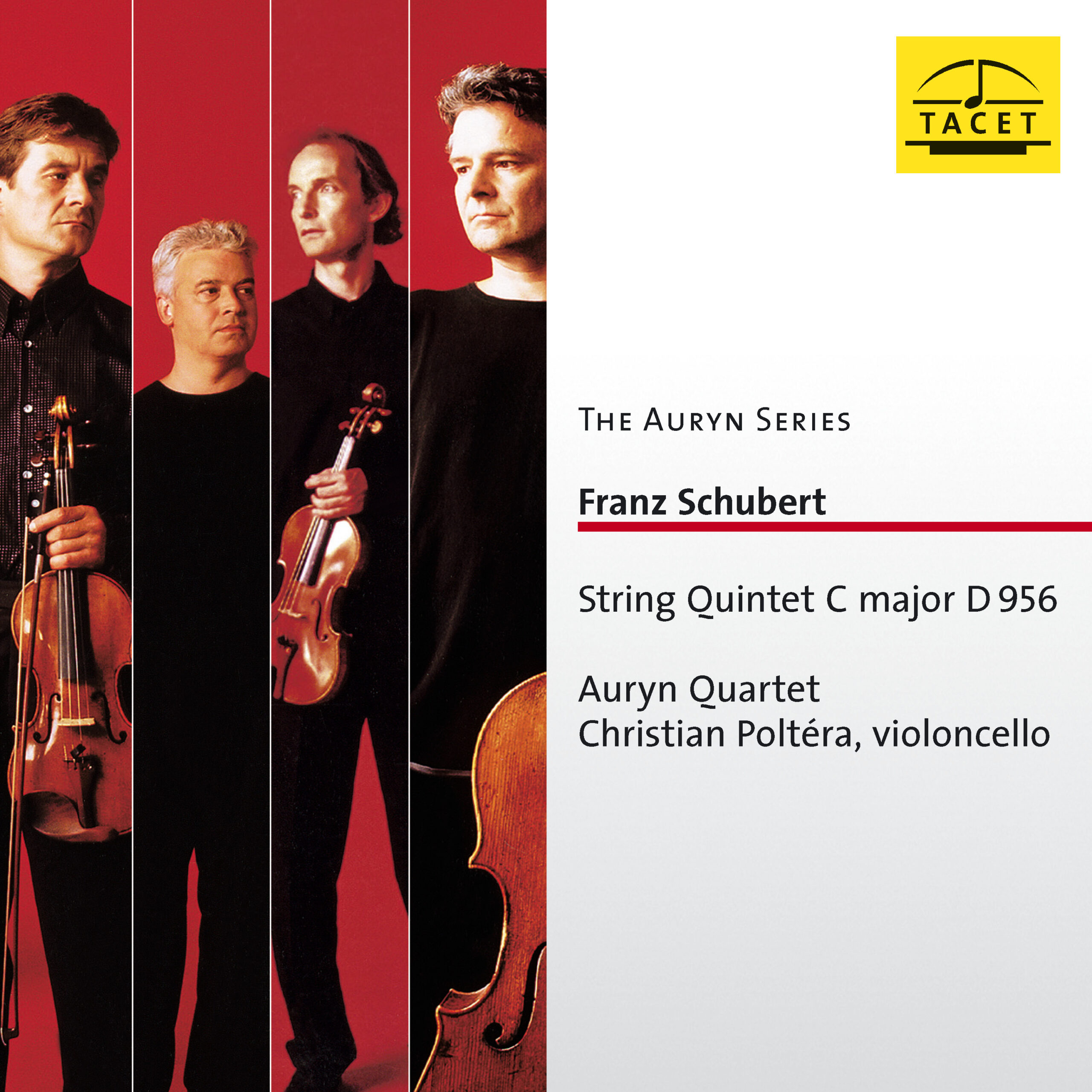
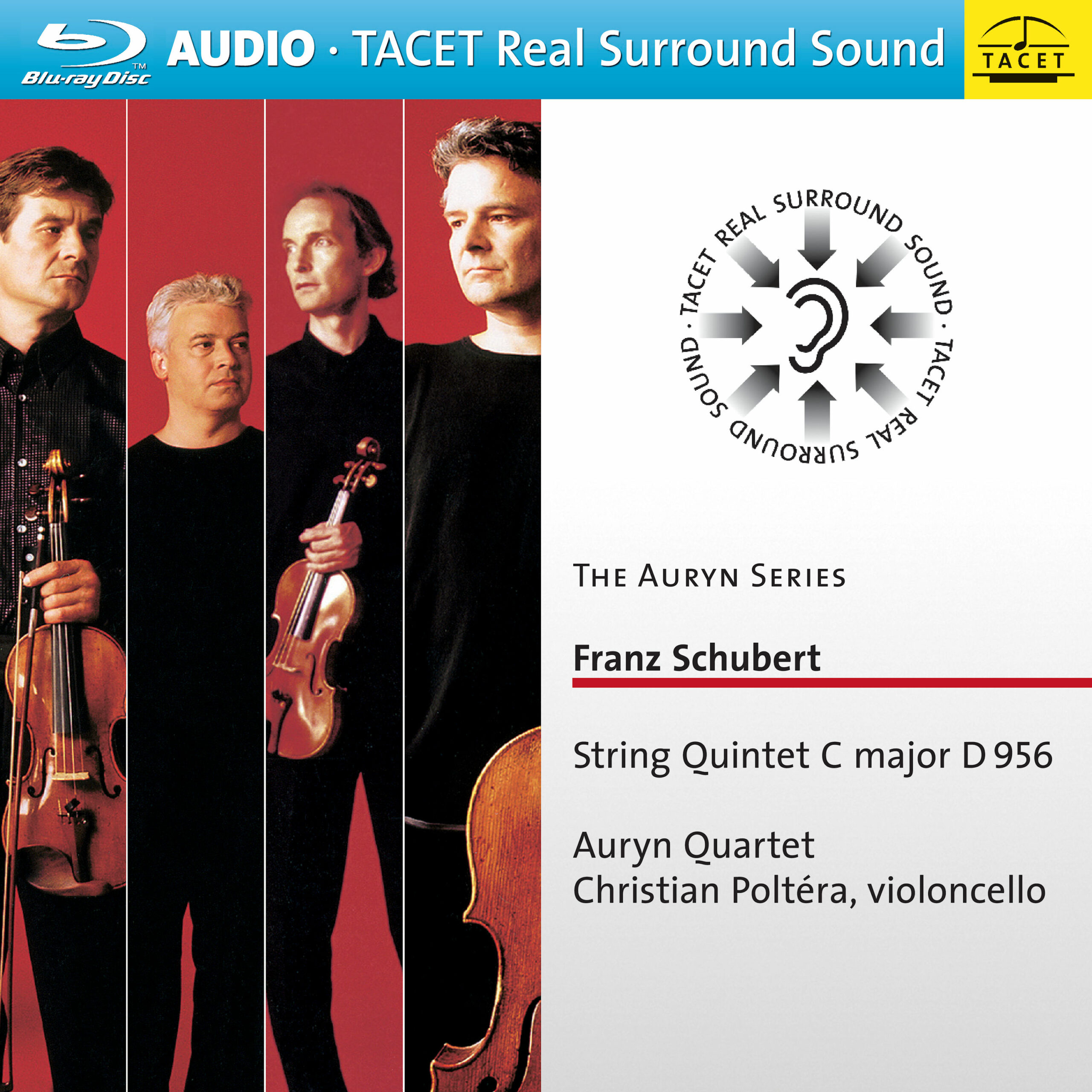
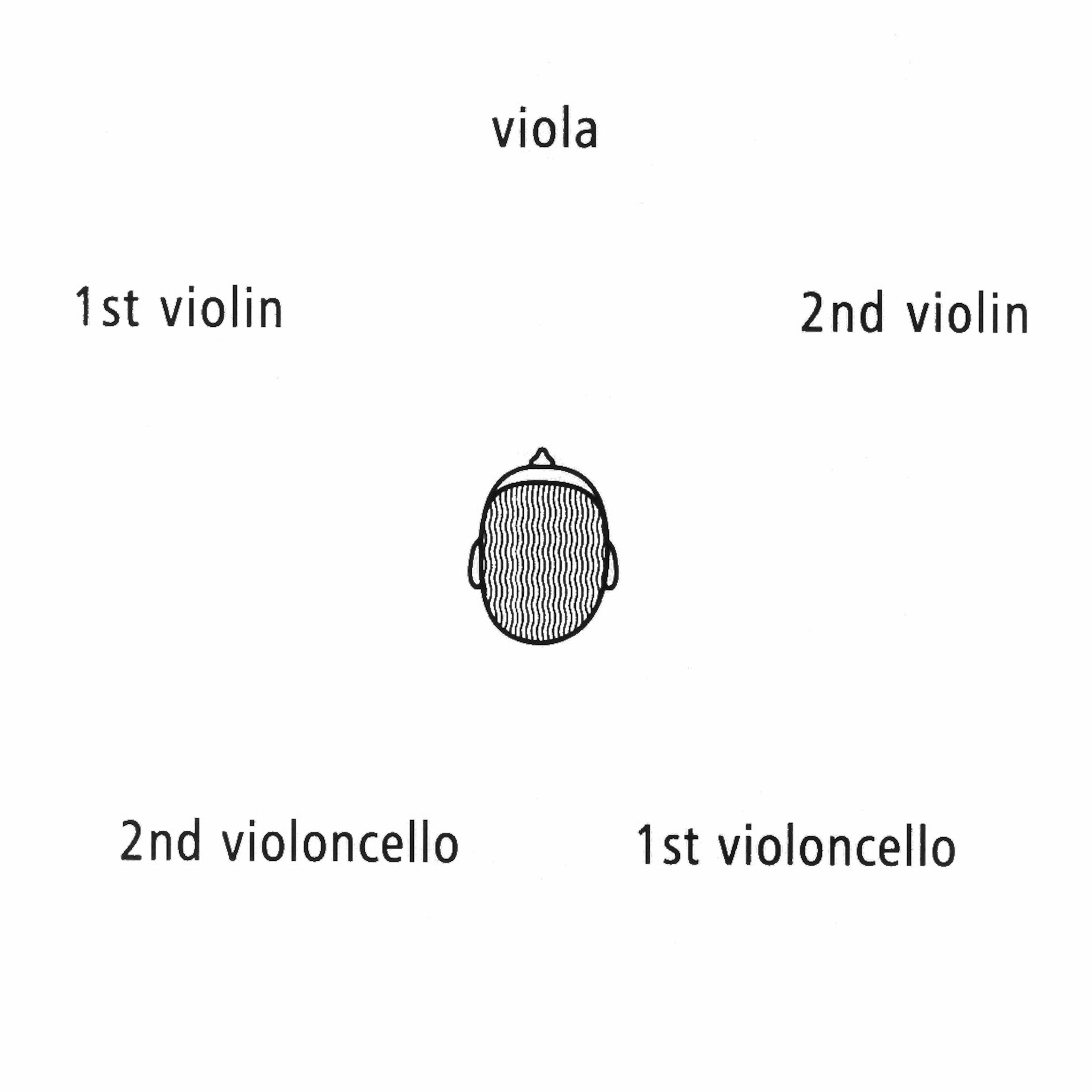
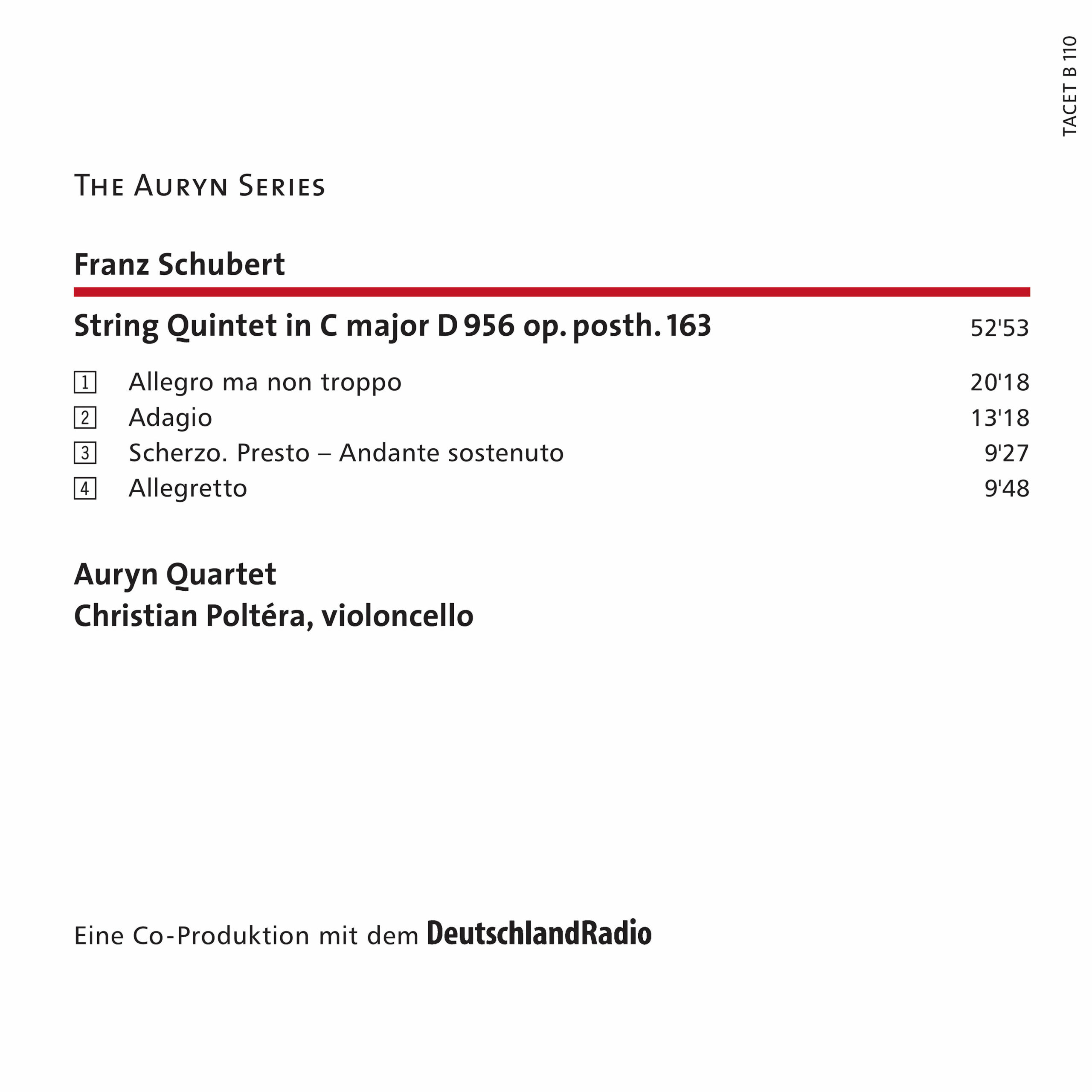
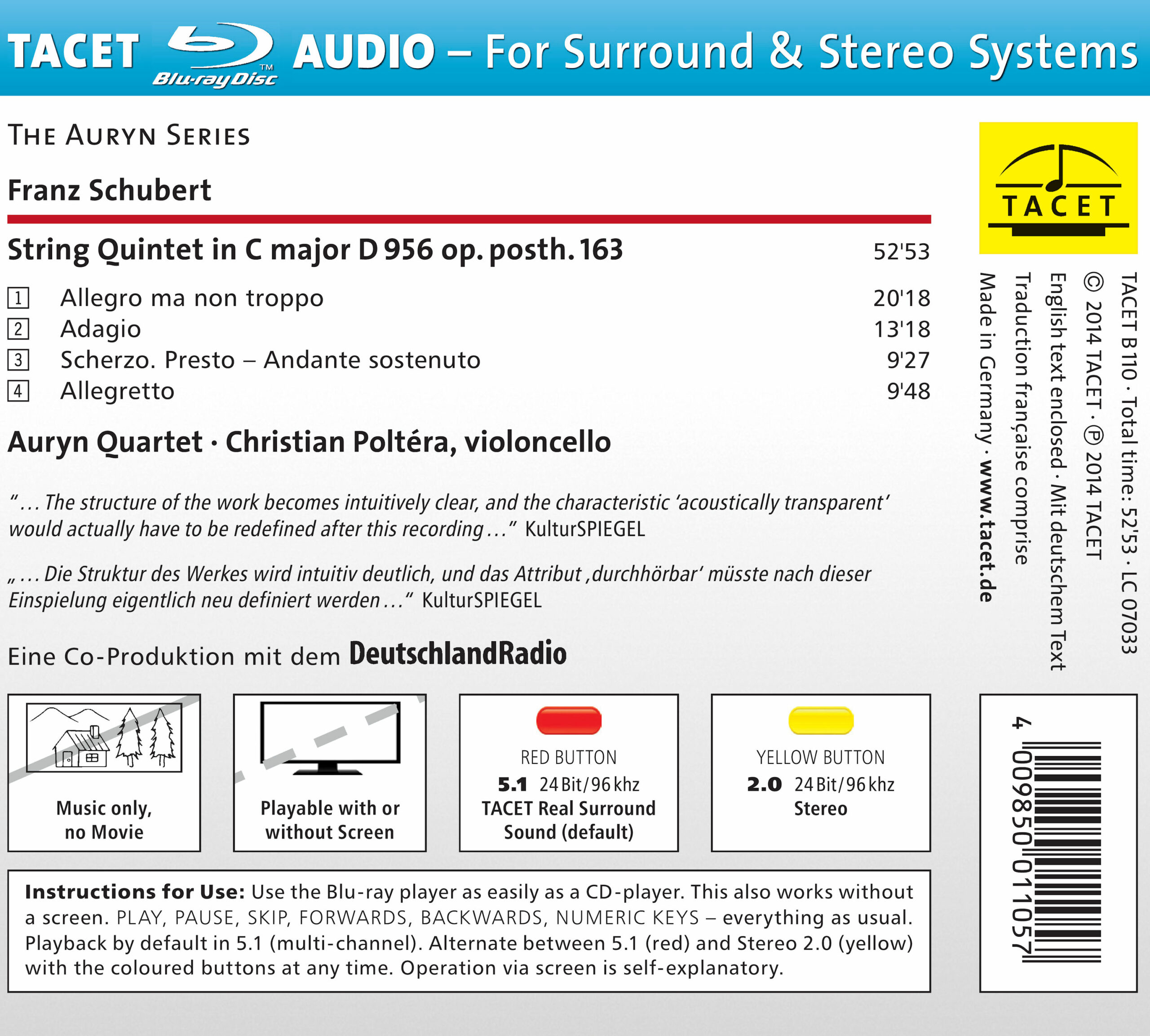

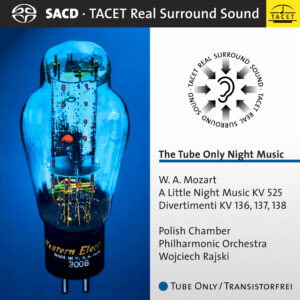
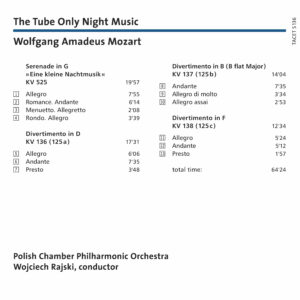
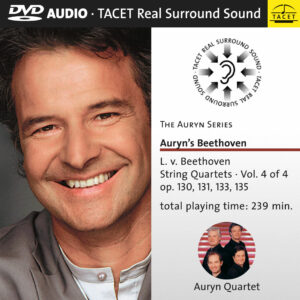

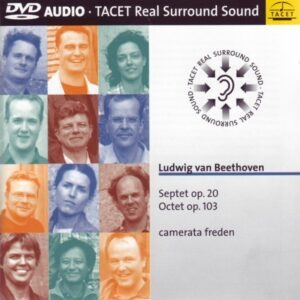
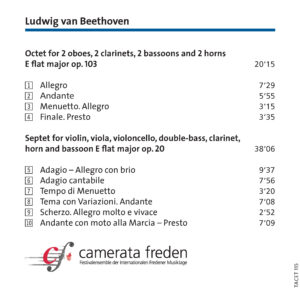

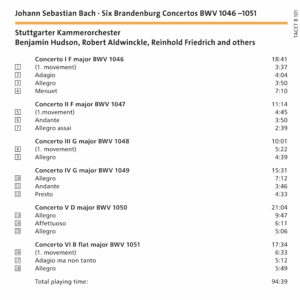

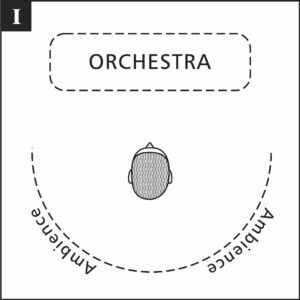
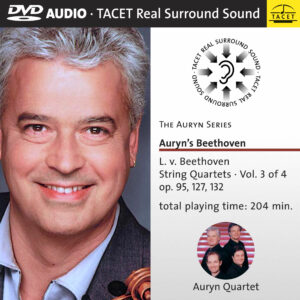

Pizzicato –
--> original review
After the Auryn Quartet had recorded all of Schubert’s quartets for cpo, a recording of the Quintet D 956 followed in 2001 for Tacet. The audiophile label has now reissued it on Blu-ray. In the Real Surround recording, the listener sits right in the middle of the quintet. And what that means becomes clear in the very first bars of the opening Allegro ma non troppo: with threatening force the music breaks over one, as Schubert clenches his fist while at the same time trying to shape a gentle melody. These and the subsequent contrasts are made almost physically palpable by the Auryns and Poltéra. Schubert’s ailing world is not mystically veiled, as one has heard elsewhere, but here sounds brutally realistic and earthly. The lament in the Adagio, stigmatized by pizzicati, and the highly agitated middle section of this movement are just as gripping.
Hardly comprehensible, then, is the vitality of the Scherzo, whose Trio sinks into the deepest and most oppressive mourning. Here too, the quintet sharpens the contrasts, just as in the Finale, where cheerful folk-like character is mixed with inner unrest and anxiety. A puzzling work full of fractures, and in this interpretation certainly nothing for the psychologically fragile.